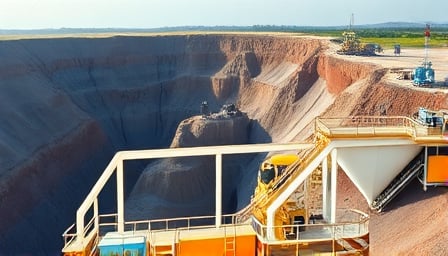Fenix Resources Ltd: A Critical Examination of Its Market Position and Future Prospects
In the ever-evolving landscape of the global mining industry, Fenix Resources Ltd stands as a notable player within the Australian resource exploration sector. Specializing in the search for iron ore, vanadium, and manganese, the company operates under the broader umbrella of the Materials sector and the Metals & Mining industry. However, despite its strategic focus and geographical positioning, Fenix Resources Ltd faces significant challenges that cast doubt on its future trajectory.
As of August 28, 2025, Fenix Resources Ltd’s share price closed at a modest 0.32 AUD, a figure that starkly contrasts with its 52-week high of 0.36 AUD recorded on August 18, 2025. This decline is not merely a reflection of market volatility but a symptom of deeper, systemic issues within the company’s operational and strategic framework. The 52-week low of 0.24 AUD, observed on September 23, 2024, further underscores the precarious nature of Fenix’s market position.
With a market capitalization of 238.13 million AUD, Fenix Resources Ltd’s financial health appears robust at first glance. However, a closer examination reveals a Price Earnings (P/E) ratio of 19.55, a figure that raises eyebrows among investors and analysts alike. This ratio, significantly higher than industry averages, suggests that the company’s stock may be overvalued, or that investors are overly optimistic about its future earnings potential. In either scenario, the implications for Fenix Resources Ltd are concerning.
The company’s focus on iron ore, vanadium, and manganese, while strategically sound given the global demand for these materials, is fraught with challenges. The volatility of commodity prices, coupled with the environmental and regulatory hurdles associated with mining operations, poses a significant risk to Fenix’s profitability and sustainability. Moreover, the company’s reliance on the Australian market for its projects, while beneficial in terms of operational familiarity and regulatory compliance, limits its growth potential in the face of global competition.
Fenix Resources Ltd’s operational strategy, centered around exploration and development within Australia, is both its strength and its Achilles’ heel. On one hand, it allows the company to leverage its deep understanding of the local market and regulatory environment. On the other hand, it restricts Fenix’s ability to diversify its portfolio and mitigate risks associated with market fluctuations and geopolitical tensions.
In conclusion, while Fenix Resources Ltd has carved out a niche for itself within the Australian resource exploration sector, its future is far from certain. The company’s high P/E ratio, coupled with its narrow focus on specific commodities and reliance on the Australian market, presents a precarious situation. Investors and stakeholders would do well to approach Fenix Resources Ltd with caution, keeping a close eye on its strategic decisions and market performance in the coming months. Only time will tell if Fenix can navigate the challenges ahead and secure its position in the competitive landscape of the Metals & Mining industry.
